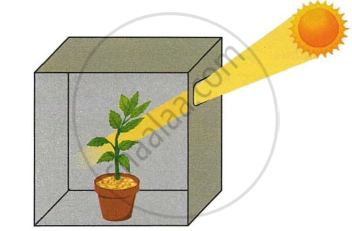Advertisements
Advertisements
प्रश्न
Name five stimuli which act on plants. Name the type of tropism produced by each one of these stimuli.
उत्तर
- Light produces phototropism
- Water produces hydrotropism
- Touch produces thigmotropism
- Chemicals produce chemotropism
- Gravity produces geotropism
APPEARS IN
संबंधित प्रश्न
How is the movement of leaves of the sensitive plant different from the movement of a shoot towards light?
The root of a plant grows downward. This is known as ______.
One of the following plant hormones is responsible for the phenomenon of phototropism in plants. This is :
(a) gibberellin
(b) eltroxin
(c) cytokinin
(d) auxin
Which of the following terms denotes the movement of the root of a plant towards moisture in the soil?
(a) thigmotropism
(b) chemotropism
(c) hydrotropism
(d) geotropism
The bending of the shoot of a plant in response to light is called :
(a) geotropism
(b) phototropism
(c) thigmotropism
(d) photonasty
What are tropic movements? Briefly explain various types of tropic movements in plants.
State whether true or false. If false, correct the statement.
The response of a part of plant to the chemical stimulus is called phototropism.
Give an example of negative hydrotropism.
Arrange and rewrite the terms in the group in the correct order so as to be in a logical sequence, beginning with the term that is underlined.
Apical meristem, Positive phototropism, Auxins, Cell elongation.
The figure given below depicts a kind of tropic movement in plants. Study the same and answer the following questions:

- What kind of a movement is shown in the figure? Define it.
- How does this movement differ from geotropism?
- Name the stimulus responsible for thigmotropism. Give one example of a plant showing thigmotropism.
- Name one stimulus which gives a positive response for the roots but a negative response for the shoot.
- Draw a neat and labelled diagram of the part of a plant showing leaf tendril. Name the plant.
